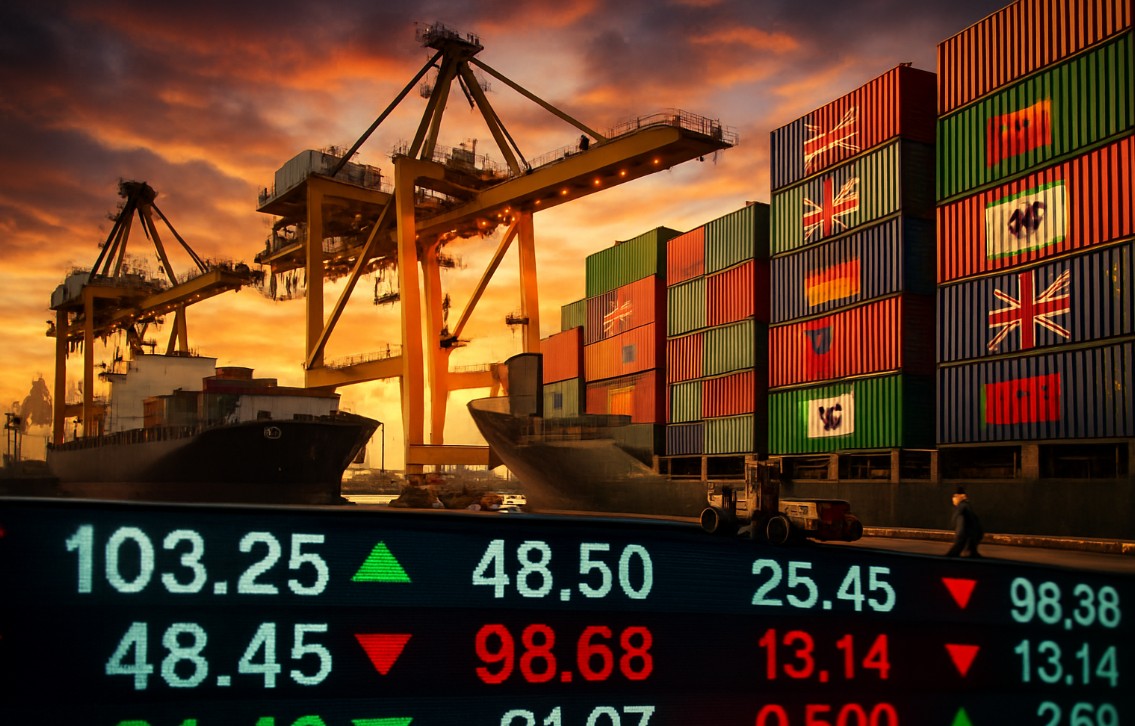
Trump’s UK Trade Deal: More Show Than Substance, But Markets Bite
On Thursday, President Trump and UK Prime Minister Keir Starmer stood before the world and declared a “historic” new trade agreement between the United States and the United Kingdom.
A Deal in Name, Not in Substance
The announcement, delivered with the usual Trumpian bravado, was quickly seized upon by Wall Street: the Dow Jones Industrial Average leapt 500 points, a reflexive burst of optimism from investors hungry for any sign of progress after weeks of tariff-fueled uncertainty.
But as the confetti settled, a closer look at the deal revealed a familiar pattern—one that’s become almost a signature of Trump’s approach to international negotiations. The “deal” is, in many ways, more sizzle than steak.
What’s Actually in the Deal?
Let’s break it down. The agreement keeps the U.S. baseline tariff rate on UK imports at 10%, a figure that’s hardly a win for British exporters. There are some headline-grabbing exceptions: duties on British aluminum and steel are eliminated, and tariffs on a limited number of UK car exports are lowered. In return, the UK agreed to lower barriers for U.S. farmers and ranchers, opening the door for more American beef and ethanol, and to give U.S. aerospace companies better access to British-made components.
Trump, never one to underplay a win, called it “a great deal for both parties,” touting billions in increased market access for American exports, especially in agriculture. “It opens up a tremendous market for us, and it works out very well. Very well,” he said, in a phone call with Starmer that was broadcast from the White House.
But Starmer, ever the cautious negotiator, described the announcement as merely the “basis” of a deal, and made it clear that further negotiations would be needed to bring down Trump’s 10% baseline tariff. “We would like to go further,” he said, standing in a West Midlands manufacturing plant. “But please do not underestimate the significance of the tariff reductions today, because these are measured in thousands of good-paying jobs across the country.”
The Market’s Hope vs. Economic Reality
If you’re a market watcher, the 500-point jump in the Dow might seem like vindication. But as someone who’s covered more than a few of these “breakthrough” moments, I can’t help but recall the last time a big trade announcement turned out to be less than meets the eye. The market, after all, is a creature of hope and headlines, not always of hard-nosed analysis.
Economists, for their part, were quick to pour cold water on the celebration. Dean Baker, co-founder of the Center for Economic and Policy Research, called the deal “largely done for show.” He pointed out that there were already very few trade barriers to U.S. exports to the UK, and that the new agreement doesn’t meaningfully change that picture. “The higher tax on imports from the UK amounts to a tax increase of around $6 billion a year on U.S. businesses and consumers,” Baker noted.
A Desperate UK, a Triumphant Trump
It’s hard to ignore the context: since Brexit, the UK has been desperate for a trade deal with the U.S. Kenneth Rogoff, a Harvard economist, noted that the deal is the product of years of negotiations that began long before Trump’s recent “Liberation Day” tariff blitz. For the UK, the agreement is more about optics and political necessity than economic transformation.
Meanwhile, Trump’s team staged a press event that, according to some observers, bordered on the surreal. The Bulwark described it as a “bizarre press event celebrating a UK trade deal that changed almost nothing,” with Trump bragging about tariffs, luxury cars, and even claiming empty ports were a win for America.
What’s Next? More Negotiations, More Uncertainty
Both sides admit this is just the “end of the beginning.” Starmer wants more concessions, especially on Trump’s 10% tariff, and the UK is pushing for better access for its pharmaceutical products. Trump, meanwhile, is already talking about tariffs on foreign film production—a move that has Hollywood and British studios on edge.
For now, the deal is a temporary, yearlong understanding, with more rounds of negotiation ahead. The real impact on consumers and businesses remains to be seen, but one thing is clear: the markets may have bought the hype, but the substance is still up for debate.
A Personal Note
I’ve watched enough of these trade deal unveilings to know that the devil is always in the details—and sometimes, the details are missing altogether. This one feels like déjà vu: a big announcement, a market rally, and then the slow realization that not much has changed. As one British official told me off the record, “It’s better than nothing, but only just.”
The Bottom Line
Trump’s “historic” UK trade deal is, at best, a modest step forward and, at worst, a political performance designed to soothe markets and shore up support. For now, hope is the commodity in highest demand.
